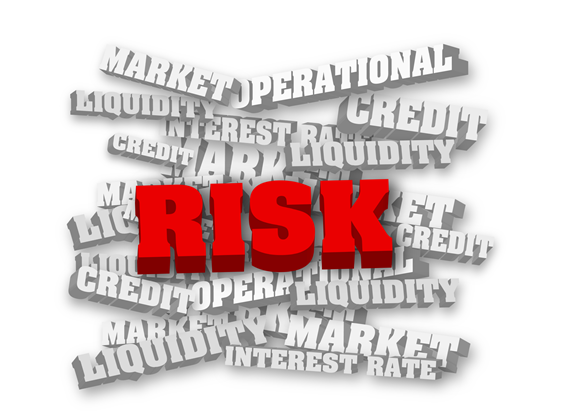What is liquidity risk?
Liquidity refers to the ease of converting an asset/ investment into cash or marketable securities. Therefore, liquidity risk refers to the risks entailing the successful conversion of assets into money. A high liquidity risk depicts more difficulty in converting assets and vice versa. It is a significant risk; as lower liquidity leads to a cash crunch in times of need. Moreover, it often indicates lesser chances of being able to meet short term obligations.
Summary
- Unconstrained investing is a flexible and adaptive style of investment adopted by fund/ portfolio managers.
- It gives the fund managers the ability to benefit from market fluctuations in an appropriate manner.
- It is a risky investment approach, and poor decision making may drain portfolio gains. Thus, investment managers must assess asset risks properly before investing.
Frequently Asked Questions (FAQ)
Why is liquidity risk important?

Source: © Ironrodart | Megapixl.com
- Liquidity risk helps individuals and firms manage their investments and operations.
- It shows the risks involves in meeting short term financial obligations.
- Assessing liquidity risk is essential to gauge the financial distress associated with an asset.
- It highlights all the difficulties a firm will face to liquidate assets it has.
- It represents the stress it will go through in case of a dissolution.
What are the types of liquidity risks?
There are two significant types of liquidity risks –
- Funding liquidity risk- meaning the ability to meet short-term debt obligations using cash flows from operations. Inability to meet short-term obligations reduces a firm’s credibility and performance. Rising debt levels and almost no current assets liquidate and fulfill obligations also affects revenue generation capacity.
It measures the funding liquidity risk necessary to get an idea of future operations. It can be assessed easily using the following parameters –
- Current ratio- depicts the number of current liabilities covered by current assets, indicating its repayment capability. A high ratio implies enough cover available to pay off existing short-term debts. In contrast, a low ratio indicates a negative future funding availability.
- Quick ratio-which ensures minimal funding risk exposure. It considers only liquid assets, which easily get converted to money. While a high ratio indicates a strong financial efficiency, a lower ratio might indicate inefficient management of quick assets.
- Interest coverage ratio-reflects the ability to meet interest obligations on outstanding loans through earnings before interest and taxes. It is associated with the solvency of a firm. A low ratio means a risk of not covering interest liability which points out a probable bankruptcy.
- Market liquidity risk
It caters to the systematic risk accruing to investment from the volatility of stock markets. It highlights the impact of fluctuations in share prices on investment assets held for maintaining liquidity. A high market liquidity risk indicates challenges in selling short-term investments and vice-versa.
To measure market liquidity risk, the bid-ask spread of security and its market demand and supply conditions are considered.
- Bid-ask spread- It is the margin available to a security seller. A higher bid-ask spread indicates high market liquidity risk and more possibilities of losses.
- Demand & supply of security- indicates the response of investors towards security price fluctuations indicating stock volatility.
Funding risks depend upon internal management, and market liquidity risks are derived from external factors.
What are some examples of assets having high & low liquidity risks?

Source: © Phiseksit | Megapixl.com
Some investments have high liquidity risk, for example:
Fixed assets like land, buildings, certificate of deposit, art pieces, long-term loans, and stocks with low trading volumes are given.
On the other hand, certain assets have very low liquidity risks, for example:
Cash and cash equivalents, popular stocks, mutual funds, money market instruments.
What is liquidity risk in banking?
Banks issue loans to customers and received deposits. While loans are assets for them, deposits are liabilities. To repay these deposits, banks need to maintain a certain level of liquidity at all times. The conversion of deposits into long-duration loans brings with it an inherent liquidity risk. Funds get stuck for a longer time.
It is the sole reason why banks keep a small percentage of their total deposits as cash on hand or liquidity reserve. If the reserves are not sufficient, banks are unable to remain solvent. Therefore, banks always prefer to convert liquid liabilities (deposits) into liquid assets (short-term loans) for this purpose only.
How can firms manage liquidity risk?
Liquidity risk management is possible by keeping a check on the following:
- Ensuring that lower levels of risk exposure from the interest rate and market volatility.
- Planning and structuring a proper mix of assets and liabilities in the balance sheet.
- Optimising the risk/return profile based on previous data and experience.
- Assessing the ability to meet its cash flow and collateral needs frequently for a firm.
- Developing strategies that mitigate risks and ensure appropriate actions to make funds and collateral are available when needed.
- Forecasting future cash flows to manage finances better.
- Comparing assets and liabilities to determine how much cash can be generated on short notice.
- Ensuring a buffer between earnings and expenses to cover unexpected expenses.
- Holding more liquid assets over illiquid ones to quickly generate cash without incurring significant losses.
- Analysing key financial ratios frequently limit exposure to liquidity risk.
- Reducing leverage is a major source of liquidity risk.
- Simulating various stress tests to identify risk areas in the event of an economic shock.
- Diversifying more into liquid investment options to limit exposure to risk and loss.
 Please wait processing your request...
Please wait processing your request...